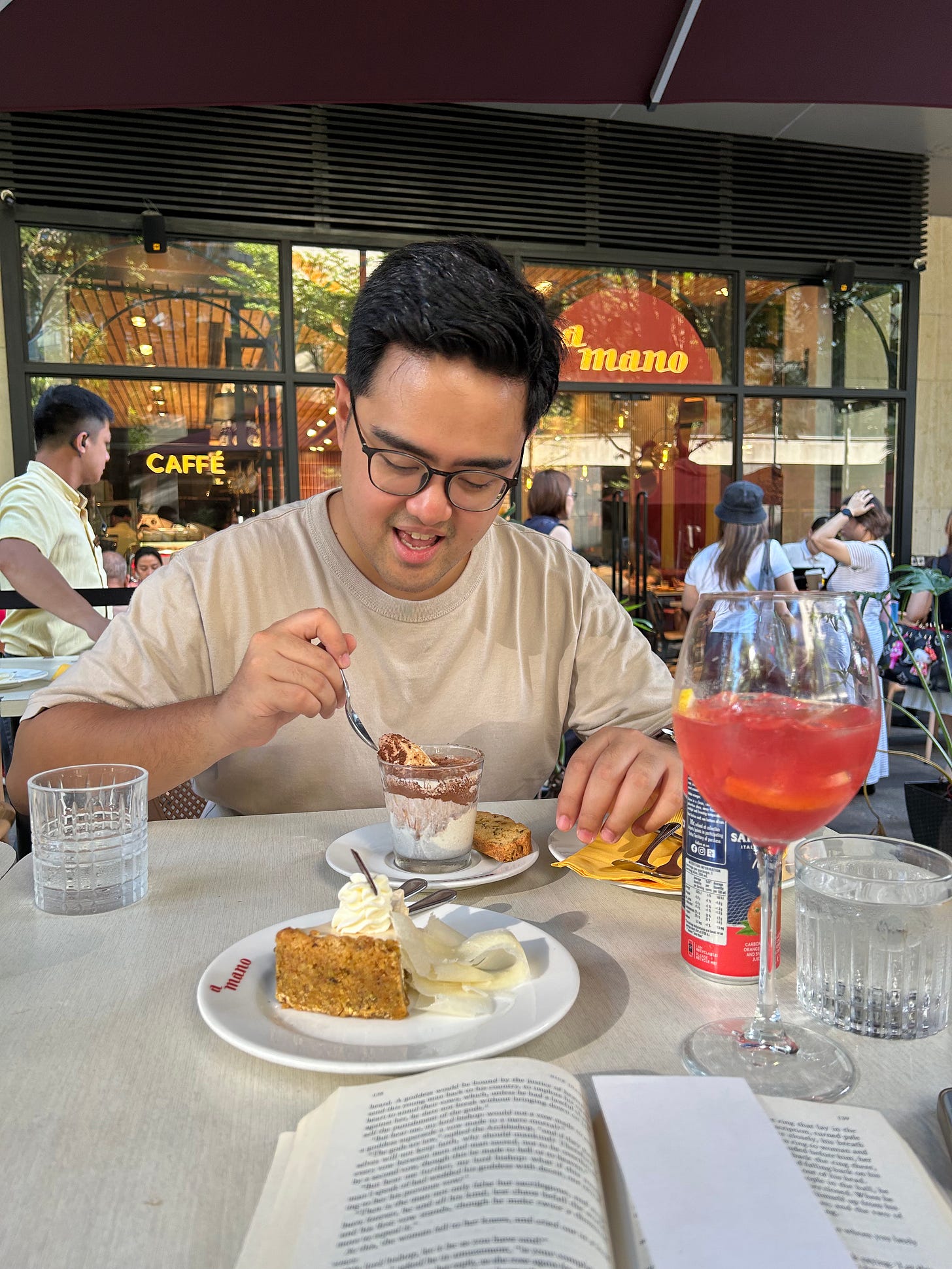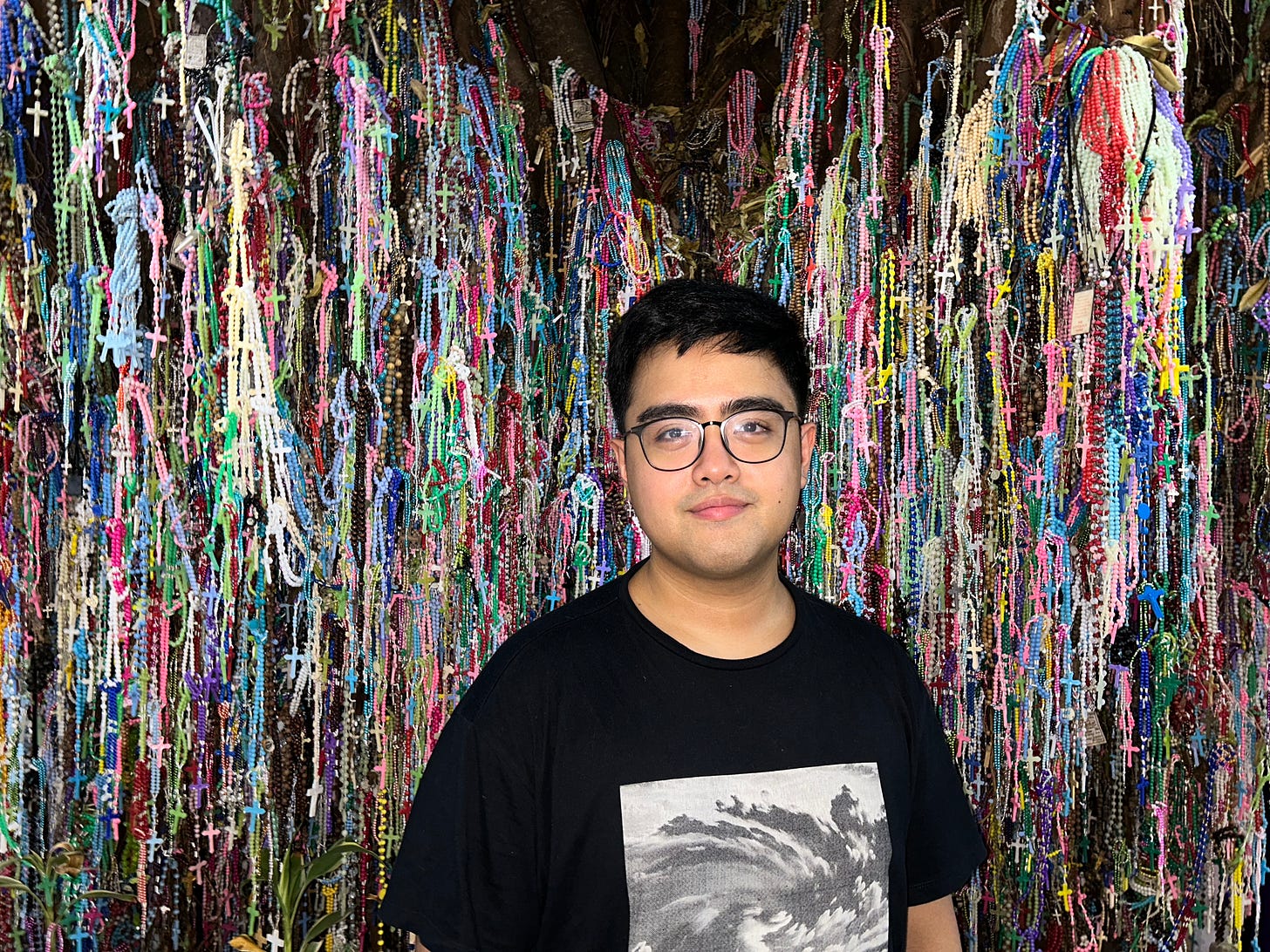I spent the past weeks recovering from an awful case of burnout. I may have been spreading myself too thin, or letting myself be dragged about by the many, many things going on in my own life (nagpatangay).
If you don’t already know, I’m the only person behind Sikodiwa. Most of the time, I do actually enjoy the manic rush of creation and engagement. When I’m seized by the spirit of passion, I feel like I’m dancing with the world! But still, there are times when the tank gets empty, and I end up running on fumes. This usually happens when I overestimate my own capacity, and when I’m no longer mindful about my own bodily needs. It’s what happened to me in the recent days. My schedules were fully packed, I kept myself awake and busy at late hours, and I succumbed to the quiet pressure of modern anxiety that calls itself “productivity.” I was losing focus, missing engagements, waking up tired, and getting irritable.
Happily, because it was a long holiday last week, I was able to take a step back. As I write this, I am still recovering, but after a few days of dedicated rest, it’s incredible how much better I feel. How bizarrely aligned with the theme of suffering, death, and rebirth of the Holy Week.
Announcements
You can pre-order my upcoming book, Sikodiwa: Revisiting Filipino Indigenous Wisdom for Personal and Shared Well-being! It will be released by North Atlantic Books on 2 December 2025, and it will be made available in print and e-book formats internationally.
You are invited to join my exclusive space on Patreon, either as a Reader (access to lecture archive, except live lectures and current recordings) or as a Member (full access to all content, plus live lectures and community chat).
I was invited to give a talk for an art exhibit curated by Jun Sabayton, that reflects on the villains of classic Filipino cinema. This will be tomorrow evening, at Santa Rosa House, 54 Santa Rosa street, Kapitolyo, Pasig City.
From the Archive
I have spoken many times about the influence of social systems and the environment on personal wellbeing. That is one of the themes of my upcoming book, and the point of this academic article, which I published in 2023 (Here’s an accessible version). In 2024, I gave a talk for KERI, a group that advocates for the wellbeing of activists:
Care for the Inner Garden
Endless scrolling on social media is not always the same as resting; it’s a distraction from what the body and mind actually need, and an added stimulation. As I wrote in my Holy Week reflection for Lifestyle Inquirer:
Our tendency might be to distract ourselves with screen time and doomscrolling on our phones. This is because we do not actually want to listen to the feelings we have buried deep within us: the anger, discontent, resentment, anxiety, and sadness that has built up every other day of the year because of our work and social relationships. So, even though we get to rest from our duties, we are not really letting our spirit breathe.
I’m not saying it can’t be effective, I’m just saying that in many cases it’s a form of suppressing what we need to face. So, in the past few days, I listened to my body and got out. Although the days have been increasingly hot, I found time to enjoy life’s wholesome pleasures.
I also did participate in Holy Week celebrations. Something about the communal aspect of religion can make you forget yourself for a bit, and place you back in the context of a shared culture. I also find these old traditions fascinating, particularly in how they blend animist and Catholic symbolism, such as in this tree with rosaries in Padre Pio chapel:
Further Study
I recently got a copy of Mellie Leandicho Lopez’s “A Handbook of Philippine Folklore” (UP Press, 2006). Being someone in the field of folk psychology, the existing tools and frameworks of folkloristics can be incredibly useful. In fact, I glean most of my knowledge about indigenous psychology from folk wisdom. For recommended readings on these interests, check out this list I made.





